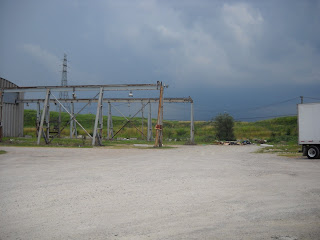
As explained in earlier posts, James Eads was awarded many of the major naval building contracts in the western theater. He divvied up the work between several shipyards, but the Union Iron Works at Carondelet, Missouri hosted the lion's share of production.
Eads turned an already busy port town into a major naval center virtually overnight. His contract to construct the City-class gunboats (more about them soon) resulted in the building of four new ironclad warships in Carondelet: the Baron de Kalb, Louisville, Pittsburg, and most appropriately, the Carondelet.
 The boatyards spanned across much of Carondelet's Mississippi riverfront property, ranging from the confluence of the River des Peres and Missisippi northeast past Marceau and Davis streets and along Vulcan Street. The warehouses and docks were supported by nearby rolling mills, sawmills, and foundries. Businesses like the R.C. Totten and Company Foundry in St. Louis provided much of the armor for the new vessels.
The boatyards spanned across much of Carondelet's Mississippi riverfront property, ranging from the confluence of the River des Peres and Missisippi northeast past Marceau and Davis streets and along Vulcan Street. The warehouses and docks were supported by nearby rolling mills, sawmills, and foundries. Businesses like the R.C. Totten and Company Foundry in St. Louis provided much of the armor for the new vessels.
The City-class ships were finally completed in January 1862, and Carondelet's namesake ironclad would feature prominently in many of the upcoming battles for the west. Carondelet would continue to build more vessels, including many of the tinclads that were introduced later in the war.
Today there's no evidence Eads's shipyards ever existed, though many other buildings from the Civil War-era remain elsewhere in town. The shoreline where ironclads were once built is now overgrown, and empty, decaying factories stand nearby. The area that was once the center of the marine ways is now the home of the New World Pasta factory. I visited Carondelet in July, and took these photos just before a storm blew in.





0 comments:
Post a Comment